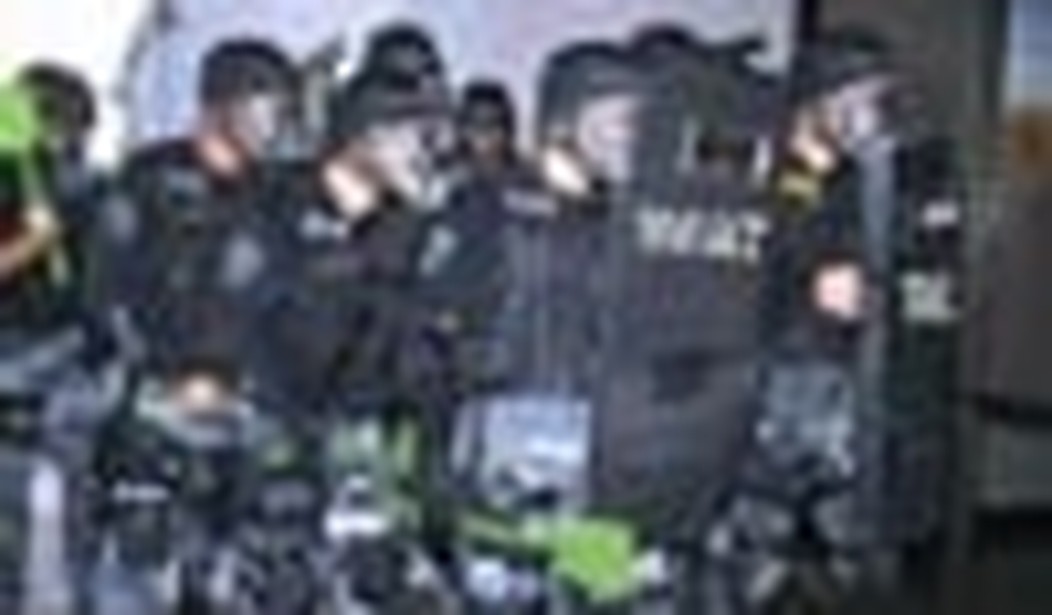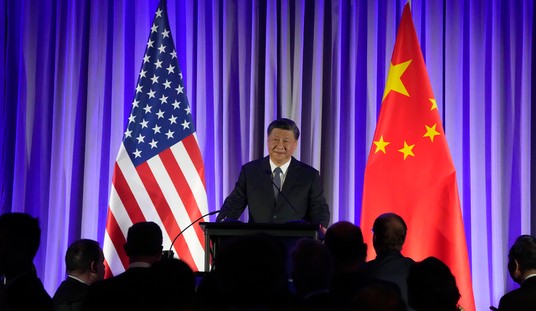It’s a difficult time to defend SWAT teams. On May 5, 2011, during the morning hours, a Special Weapons and Tactics (SWAT) team of the Pima County Sheriff’s Department (Tucson, AZ) raided the home of Jose Guerena, his wife Vanessa, and their four-year-old son. Guerena, 26, a Marine veteran of two combat tours, worked in a nearby copper mine. Vanessa, seeing armed men in their yard, warned Jose, who sent her and their son to hide in a closet. Taking up his AR-15 rifle, Jose waited in a hallway, ready to defend his family. Within minutes, despite never taking his rifle off safe and never firing a shot, he would die in a fusillade of 71 bullets. The police would not allow medical personnel to tend to him for one hour and fourteen minutes. By then, he was long dead.
The Guerena raid was one of four conducted in the same general area that morning, in response to a drug investigation, which apparently somehow involved Guerena’s younger brother. While the police have labored mightily to implicate Guerena in the drug trade — they breathlessly publicized the discovery of a Border Patrol baseball cap and a bullet resistant vest — they found not so much as a single marijuana seed or any other real indicators of drug involvement in his home.
I posted a tactical analysis of the police raid on May 28 on the Confederate Yankee website, where I co-blog with Bob Owens, whose PJM story on May 25 generated considerable public interest in the case. That analysis was based on currently available information in the public domain and on the 54 second video of the raid released by the Pima Co. SD. The SWAT action on that May morning will surely be used in future textbooks as an example of how not to conduct SWAT operations. So disorganized were the police, so uncoordinated were their tactics that they can scarcely be called tactics. Their uncontrolled, panicky barrage of fire — 22 out of 71 rounds fired hit Guerena and they hit at least one other home in the area — and their circle-the-wagons non-response to the aftermath of their raid raise many questions, not only about that particular incident, but about the wisdom and utility of having SWAT teams in general. How should we respond?
Over the last three decades, SWAT teams have become more and more common in law enforcement organizations (LEOs), large and small, across the nation. In many cases, teams are established to meet real or perceived needs. In some, they are a matter of institutional prestige, a sort of law enforcement “keeping-up-with-the-Joneses.” This trend has, unfortunately, sometimes produced teams in search of missions rather than teams who respond to a predictable number of legitimate missions.
It has also diverted attention away from the original, valid purpose of SWAT teams. They exist because day-to-day patrol forces are generally not prepared, in training, experience, or equipment, to deal with more complex tactical situations. The classic SWAT callout is a barricaded hostage taker who will usually be talked out by a skilled negotiator without a shot being fired. The most likely alternative is ending the situation by means of a single shot fired by a police marksman. A less common alternative is a “dynamic entry” by a heavily armed and armored entry team. In such cases, the likelihood of suspects or police officers being injured or killed is dramatically increased. The real problem is that such tactics also greatly increase the probability of innocents being injured or killed. The Cato Institute has published a map — available here — that illustrates the problem.
Should SWAT teams exist? The answer is a carefully qualified yes. There are indeed situations that require equipment, knowledge, training, and abilities that a patrol force simply does not have. Throwing unprepared, untrained officers into such situations virtually guarantees that they — and others — will be unnecessarily injured or killed. Police supervisors and administrators must be experienced and smart enough to know what they can’t handle the situation and when they must back away rather than charging blindly ahead. They must resist the often overpowering police tendency to “do something,” regardless of the potential consequences.
The same is true for SWAT teams. A poorly chosen, poorly trained, and underequipped SWAT team is in many ways even more dangerous than patrol officers who have gotten in over their heads. SWAT teams will commonly be used in situations that are even more inherently dangerous than those faced by cops out of their depth — situations that require a very high level of training and skill.
SWAT teams present many problems for police administrators. They are, particularly for smaller police departments, very expensive, not only in terms of dollar outlay for necessary equipment, which can easily exceed $10,000 per operator, but in terms of consumables, such as ammunition, and man-hour replacement. Training costs are also very high, and often continually incurred.
To learn and maintain necessary skills, SWAT teams must routinely practice together. Forming a team from the ranks of a single LEO usually requires assigning officers from most bureaus; several detectives, several supervisors, patrol officers, etc. When the team trains, those officers aren’t available for their regular duties, and many have to be replaced, often by calling in other officers at overtime rates to work extra shifts. This not only strains already tight manpower budgets, but contributes to illness and stress among those who have to fill in and, as a result, lose sleep and time with their families.
Few LEOs have in their ranks officers with the experience and knowledge necessary to properly train a SWAT team, which includes not only the function of the entire team, but the specialized individual skills necessary for each operator. This means that outside instructors must either be brought in, often, to instruct the team, or that the entire team must be sent to facilities where instruction can be obtained. In either case, this is a very expensive proposition — again, not only for the high dollar costs involved, but the time that officers will be away from their duties. There are some federal agencies who offer such training on-site at low or no cost, but even without a large cash outlay, substantial other costs are involved, and such trainers cannot return over and over again as often as necessary to ensure proper continuing proficiency.
One of the largest expenses is ammunition. A thousand rounds of .223 rifle ammunition commonly costs, even with police discount pricing, $300 or more, and handgun ammunition is only slightly less expensive. Match quality rifle ammunition for marksmen is amazingly expensive. The problem is that a properly trained and maintained SWAT team can — and should — go through far more ammunition than the rest of the LEO combined. A 100 man LEO might shoot 5,000 rounds a year in qualifying its officers. A 20 man SWAT team can easily shoot that much in a single day of training if for no other reason than that their minimum qualification standards must be much higher and more exacting than those required of a regular police force.
Why is all of this necessary? Because SWAT teams, if properly chosen and trained, are expected to be smarter, faster, stronger, and much more capable of exercising rapid and correct judgment under pressure than the average officer. They don’t exist to routinely produce overwhelming volumes of fire. They do not expect — or hope — to shoot someone whenever they are called out. In fact, real professionals consider having to shoot a failure. They know that sometimes they will have no choice. When they do have to use deadly force, they are expected to use it only when absolutely necessary, and with cool precision, absolute accuracy, and immediate effect. In a situation where an average officer might have no option but to shoot, a SWAT operator is expected to be able to take the extra fractions of a second necessary to consider other options before shooting. They are expected, through experience, planning, and superior execution, to turn every situation to their tactical advantage to absolutely minimize the danger to the public in any situation. Again, this is not always possible, but a properly trained SWAT team will experience far fewer such situations than an under-trained team, or a patrol force. The best and most dangerous — to the bad guys — SWAT weapon is always the flexible brains of the operators.
And therein is another significant problem. SWAT teams are prestige builders for a LEO, not only for the administrators, but for officers. In police work, the only way to significantly increase one’s income and prestige is to gain rank, to more and more move away from actual police work into supervision and administration.
There are several alternate routes to prestige and somewhat greater pay, such as becoming a detective, but SWAT assignment is an enormous and shiny prestige badge — even if there is no additional stipend, which is the case in many agencies. Well-meaning administrators, looking for ways to build and maintain morale, might consider establishing a SWAT team, often without truly considering the real costs. And once a team is established, properly trained or not, there is enormous institutional and political pressure to keep it and use it. Politicians who are funding a team may demand to know why it’s not being used more often without really understanding why such a team exists and under what circumstances it should be used.
One way to better manage costs is to establish multi-LEO teams, taking officers from each LEO. In the Guerena shooting, the team was apparently comprised of officers from four separate LEOs. This can reduce the overall costs to each agency, but usually causes many other problems. Who will command the team? Who will have the most prestigious assignments? Who will get the best equipment? How will the schedules of multiple LEOs be reconciled for training? Whose use of force policies and procedures will prevail? How will costs be split when lawsuits are filed? How will officers be chosen for the team? Who is responsible for discipline? These and many more issues can prevent a team from functioning properly and can even tear it apart.
It is in the use of such teams that the most daunting problems become obvious. SWAT teams are now routinely used to serve arrest and search warrants that would otherwise be executed by a few detectives and patrol officers. Many LEOs see such situations as training opportunities, and justify the use of SWAT teams under the “we have them, so we might as well use them’’ rationale. In fact, if lives are at risk, it is certainly not training.
SWAT teams are properly employed in hostage situations, and to serve high-risk, no-knock warrants, as are sometimes necessary in high-level drug cases. Even then, careful planning and smart surveillance and execution can minimize risk. SWAT teams are also properly employed in such situations as terrorist attacks (whether by Islamists or disaffected Americans shooting up “soft targets” like schools). However, they are of far less utility in such situations than one might imagine. Many of the functions for which SWAT teams are commonly used can be done by other officers with upgraded training and equipment.
What’s the solution? Teams should be established only where there is a real and demonstrable need based on the criteria I’ve suggested. And when they are established, positions on the teams must be assigned on the basis of experience and ability, irrespective of day-to-day rank. One of the most common problems in the formation of SWAT teams is that officers with rank tend to be assigned leadership positions on the team while lower ranking officers are used only for lower-ranking SWAT duties. It is not uncommon, for instance, to find a former Army Special Forces troop, an expert in small unit tactics, manning the most remote post on a SWAT perimeter or making coffee and sandwich runs for an incident command post, while higher-ranking officers with no experience whatever run the show.
Another problem is that such higher-ranking officers often don’t know what they don’t know. Instead of assigning the smartest, most fit, self-motivated, detail-oriented, and capable officers to the team, they assign instead the most overtly aggressive, those they want to reward through enhanced prestige, or those who will not in any way challenge their authority or make them look bad by comparison. Few higher-ranking officers are secure enough, personally or professionally, to voluntarily place themselves under the command of a lower ranking, perhaps younger, officer on a SWAT team, which is, tragically, all too often just what they should do.
Most LEOs simply don’t have the volume of kinds of situations necessary to truly justify a SWAT team. The best alternative is enhanced equipment and training for regular officers. This will have the effect of significantly increasing the overall ability and effectiveness of the entire force, and will also tend to enhance the recruitment and retention of experienced and capable officers. By issuing each officer his own vehicle, a carbine (usually an AR-15 variant, which may simply be authorized for individual purchase), and his own portable radio and tactical headset, and by authorizing the individual purchase of related tactical gear, equipment issues can be addressed at greatly reduced cost. By integrating more advanced training into the usual training cycle, a LEO can produce greater officer interest and buy-in, and greatly enhanced ability at much less cost than trying to outfit and maintain a separate team. Buying and making available expensive body armor, helmets, gas guns, and stun grenades will also reduce costs. Local agencies will be able to handle all but the most severe and unusual situations — and when help is required, outside federal and state agencies can be called in.
The point of having a SWAT team, or of upgrading training and equipment for a regular patrol force, is not to give them more and more dangerous toys to use indiscriminately, but to give them necessary and enhanced capabilities which, because of their enhanced training and ability, they will be far less likely to improperly use when they are forced to use them at all.
But what about school shootings and similar situations? The reality is that unless a school or mall shooting turns into a Beslan-like assault that stretches over several days, by the time a SWAT team can be called out, assemble, plan, and assault, the situation will almost always have been long over. In virtually every school shooting incident in American history, the police have had little or no direct effect in lessening the damage or in stopping the shooter(s). Such shooters routinely take their own lives after shooting innocents, or are stopped by armed citizens on the scene. The latter is, of course, routinely downplayed or ignored by the Legacy Media.
This is where an upgraded patrol force can be particularly effective. Armed with more effective, longer-range weapons, and communications gear with which they are intimately familiar — and, of course, having been trained to deal with exactly this kind of situation — they can arrive on the scene, often within minutes, and immediately seek and stop a shooter. (In fact, many LEOs are now changing their response models to do just that, instead of standing around outside a school waiting for commanders and SWAT while a shooter is free to kill at will inside.)
In sum, SWAT teams do have their uses. They should not be established — or decommissioned — without good and sufficient cause. But they must not be used for routine law enforcement missions, missions where their presence, particularly if they are not properly trained and equipped, will increase rather than decrease the likelihood of injury or death. A poorly trained, led, and equipped team is more dangerous than no team at all. Upgrading training and equipment for an entire police force will have a great many benefits for the public. However, there is no substitute for experience, common sense, cool thinking under pressure, and effective supervision and leadership in any facet of police work. If he could, Jose Guerena would certainly agree.
Also read: Update on Stockton, CA ‘SWAT’ by Department of Education.









Join the conversation as a VIP Member